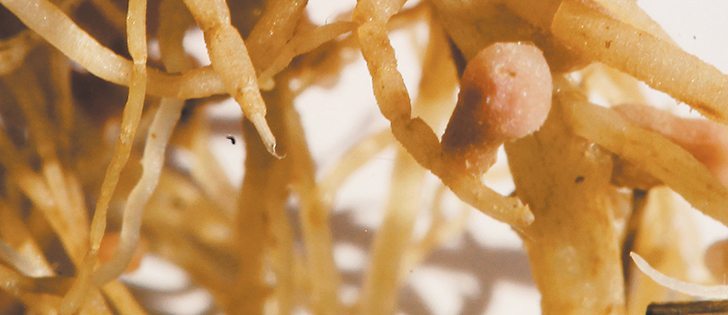There are serious risks involved in seeding lentils on soil that grew lentils last year, stony land or in the black soil zone
With lentils hitting spot highs of 80 cents per pound this spring, it’s understandable that growers are stretching recommendations by putting lentils on lentil ground, stony ground and in the black soil zone.
In Saskatchewan, lentils are typically grown on flat, stone-free, heavy clay in the semi-arid zones. The ideal brown and dark brown soils are in west-central Saskatchewan around Rosetown, Elrose, Eston and Kindersley. In the south, heavy clay on the Regina plain is the best lentil land, but only if it’s dry. Not so good when wet.
Read Also

House ag committee to undertake several studies
The House of Commons standing agriculture committee has set its agenda for the coming months. Members began the fall sitting with a two-hour update on international trade
Growers are taking on more risk when they allow attractive prices to override good agronomic practices, says Sherilyn Phelps, agronomist for Saskatchewan Pulse Growers.
Phelps says farmers should not assume that because a field was good lentil ground last year that it will be so again this year.
“The economics (of lentils in 2016) pencil out higher than any other crop, so growers are pushing the rotation, trying to take advantage of these prices while they last,” says Phelps, warning that putting lentils on land that grew lentils last year increases the risk of disease.
“Yes, you can apply fungicides, but here’s what happens. The genetic disease resistance we’ve developed in our varieties starts to break down. With lentils on lentil ground, pathogens overcome the resistance built into our varieties.
“A lot of our new lentil varieties have increased tolerance to ascochyta and some of the races of anthracnose. If growers keep pushing their rotations and increasing disease pressure, we can lose the genetic advantage we have developed. We can see a breakdown in those resistance genes.”
Phelps explains that applying fungicides that have the same mode of action allows pathogens to adapt and become immune to the fungicide.
She compares the breakdown of disease resistance to the rapid evolution of herbicide resistant weeds. Whether it’s a weed or a disease, too much dependence on crop protection chemicals will logically lead to weakening of those products.

In the long run, tighter rotations for short-term gain can become very costly, and the goose that laid the golden egg will be dead.
Lentils on stony ground. It’s a matter of debate whether or not lentils belong on a stony field. It’s standard practice to roll the field anyway, so many farmers say it’s not a big deal.
“You roll the field to push the stones into the ground, but if it’s really stony, that doesn’t completely eliminate the problem. You can still bump some stones out of the ground.
“When you’re picking things up off the ground, which you do with lentils for sure, there is a higher risk of putting a rock through your combine, if you straight cut.”
If the stones aren’t all pushed in after the first pass, some growers make a second pass from a different angle or different direction. Phelps says she’s not aware of any proven benefit to this practice. She cautions against rolling when the ground is wet because this increases soil compaction.
When it comes to lentils in the black soil zone, there’s an assumption that putting lentils on fresh soil, with no lentil history, will significantly reduce the risk of foliar disease.
“That’s true in terms of foliar diseases, but it’s a different story for root diseases. The other diseases are the root rots, particularly aphanomyces. That’s the main root disease that could hit if you seed lentils in the black soil zone.
“Lentils are just as susceptible to aphanomyces as peas are. You increase the risk of soil borne disease any time you shorten the rotation between peas on lentils, or lentils on lentils, or peas on peas.
“You don’t see root disease as much as you see foliar disease, because they’re under the ground. You might see some patches in the field, but that’s all. We saw really big problems with aphanomyces in 2014. It really exploded. We had a lot of fields that were total wrecks.”
Environment Canada says the prairies provinces should experience a dry hot summer. Phelps says those conditions should help mitigate disease pressure.
Phelps says cereal stubble would be the ideal field for lentils. In addition to the obvious benefit of reducing disease risk, pulse on cereal gives the grower a good selection of weed control options. Growers can put lentils on canola stubble, but that’s a more difficult scenario in terms of controlling volunteers.
ron.lyseng@producer.com


















